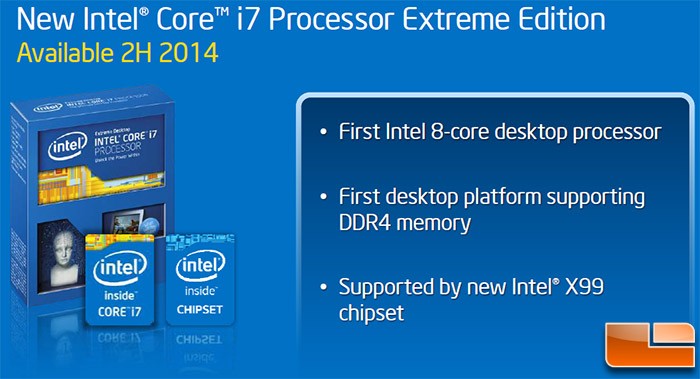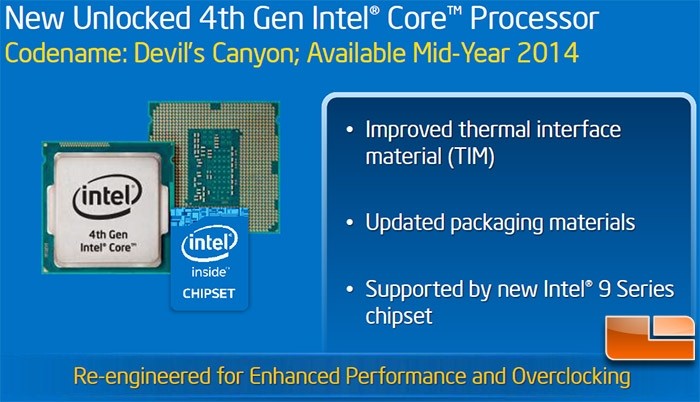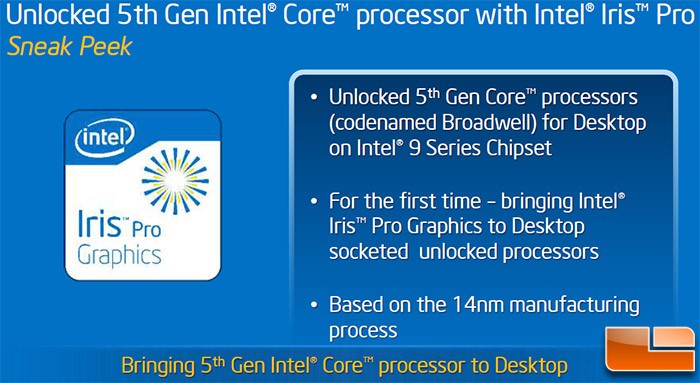At GDC 2014, Intel has unleashed a flurry of news relating to a range of their upcoming desktop-class CPUs, from Broadwell to high-performance Haswell-E and even new Pentium processors.
Starting from the top, Intel has announced that new enthusiast-class Haswell-E processors will be available in the second half of 2014. These CPUs will be the first desktop-designated parts with eight cores, and the first desktop platform that supports DDR4 memory through Intel's new X99 chipset.

Intel declined to specify what other features we may see in Haswell-E or the X99 chipset. Previous enthusiast parts, Sandy Bridge-E and Ivy Bridge-E, utilized Intel's X79 chipset, which lacked many of the features seen in Haswell's 8-series parts such as USB 3.0 and SATA 6 Gbps. It seems that Haswell-E and the X99 chipset will finally update the feature set of enthusiast setups, but this hasn't been confirmed.
Another enthusiast part has been announced today, codenamed 'Devil's Canyon'. Essentially this part is an improved Haswell K processor designed for overclockers, with an improved thermal interface material and 9-series chipset support that should see the chip reach its full potential.

The thermal interface improvement is especially critical, as some enthusiasts with current K-series Haswell CPUs realized that the material used between the die and heatspreader was poor, reducing the overclocking ceiling due to high temperatures. Again, Intel didn't go into specifics on the thermal interface or what frequencies to expect from Devil's Canyon, but the part will be available mid-year.
Moving on to Broadwell (5th Gen Core), and Intel has said that a high-end, socketed, fully-unlocked desktop part will be available with integrated Iris Pro graphics. This won't be that important for those that will use this part in a top-end gaming machine with a discrete GPU, but it'll be great for small form factor PC builders. Sometimes there's just not enough room for a dedicated GPU in these builds, so a high-end Broadwell part with Intel's highest-end graphics will make these types of systems more powerful.

The final part announced by Intel is the Pentium Anniversary Edition, designed to celebrate 20+ years of the Pentium brand. The CPU is targeted at enthusiasts who might not want to spend the cash on high-end Core parts, but still want a fully-unlocked, Haswell-based processor.
Like with all previous announcements, Intel aren't saying a great deal about the Pentium Anniversary Edition, save for a release date of mid 2014. Pentium parts typically feature two cores, no hyperthreading and mid-tier HD Graphics GPUs, but if unlocking them leads to extreme overclocking, they could be a win for budget-minded system builders.